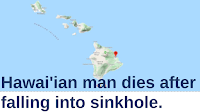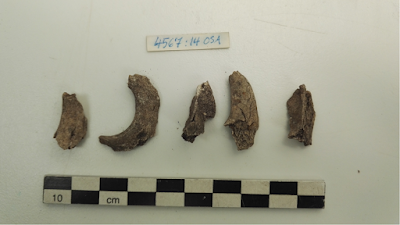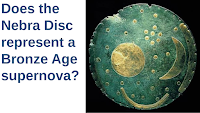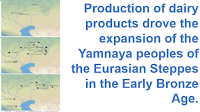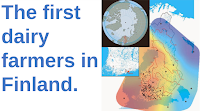The surface of Mars today is cold, arid, and heavily oxidised, but covered in surface features that tell of a very different past. The planet is home to hundreds of dry lakes, channels, and other features which must have been laid down in warm, wet conditions. Exactly how this came to be is not completely clear; Mars has always been further from the Sun than the Earth, and the ancient Sun is believed to have been cooler and dimmer than it is today. The most likely explanation is that Mars once had a dense atmosphere, rich in greenhouse gasses such as hydrogen, methane, and carbon dioxide. However, beyond this simple assumption, we know little about the ancient climate of Mars. We do not know whether the features seen on the surface of the planet represent a single warm phase, or whether Mars went through several cycles of warming and cooling, as Earth has done throughout it's history.
The weathering of minerals on the surface of Mars potentially offer some insight into the ancient climate of the planet. The way in which minerals weather is related to the presence of oxidising chemicals and/or acids at the planet's surface, and on Earth this has been used to interpret ancient climatic conditions. Loosely speaking, the elements calcium, magnesium, sodium, potassium, and manganese are mobile, and tend to be removed from minerals by weathering processes, while the elements titanium, aluminium, and zirconium, are immobile. Over time mobile elements are removed from mineral formations by weathering, while the immobile ones are concentrated by the same processes, forming clays rich in these elements. Many sites on Mars have been shown to have a surface layer of aluminium-rich clays, overlaying a sub-surface layer of iron and magnesium smectites, something which has been interpreted as an weathering-profile, with the iron having been removed from the upper layers. Importantly, iron is usually only a mobile element under reducing conditions, when it becomes soluble in water, potentially providing insights into the ancient climate of Mars. The leaching of iron implies wet, reducing conditions.
The pattern of aluminium-rich clays overlaying iron-rich smectites can be seen at many locations in the Southern Highlands of Mars, although these have not been studied in any detail. Potentially, studies of these deposits could enlighten us about the history of Mars in a number of different ways. These would include determining if the conditions which produced them were global in extent; whether they record a single, or multiple events; and are they all of the same age?
Of the 203 sites Ye and Michalski examined, 54 were new sites, detected during the study. The majority of the sites were in the Mawrth Vallis, Eridania northern basin, Valles Marineris, Nili Fossae, Simois colles/Gorgonum chaos, Noachis
Terra and Hellas Basin, at latitudes ranging from 30° north to 40° south. Sites outside this range may exist and not have been observed, or may have been obliterated by polar processes. Other features on Mars which have been associated with an ancient wet climate, such as lake basins or networks of valleys, are also restricted to the range 30° north to 40° south, which might reflect the distribution of ancient rainfall, and are found at altitudes ranging from 3000 m below to 6000 m above the Martian average surface level (lacking sees, Mars has no sealevel). Almost 88% of these exposures are on terrains interpreted as Noachian in age. Of the 203 sites examined, 65 are in units thought to be Early Noachian in age, 85 in units thought to be Middle Noachian in Age, 28 in units thought to be Late Noachian in age, and 18 are in units attributed to the Late Noachian/Early Hesperian transition. Dating based upon the density of craters suggests these sites are between 3970 and 3180 million years old

The relationship between compositional stratigraphy and valley networks and open basin lakes. The green dot represent the presence of weathering profiles in the study. The blue tone indicates the occurrence of the valley network, and the yellow circle represents the location of the open basin lake. Ye & Michalski (2022).
The sites were observed by remote sensing in a wide range of contexts, including impact
crater floors, crater rims, crater walls, inter-crater plains and
basins, within valley networks, and the knobby terrain of the Eridania deep basin deposits. This method has inherent biases, and is better able to detect steep exposures in dust free regions; it is therefore highly likely that many other similar exposures exist but have been overlooked.
Ye and Michalski combined data on 154 sites studied using the
HiRISE and
CRISM instruments on the
Mars Reconnaissance Orbiter, and the
OMEGA instrument on the
Mars Express spacecraft. This data was combined as the HiRISE instrument observes better in the part of the spectrum at which iron minerals are visible, while the CRISM and OMEGA instruments observe better in the part of the spectrum at which aluminium minerals are best detected.
Characteristics of representative geological contacts in martian weathering profiles. HiRISE IRB data (infrared, red, and blue-green) reveal
sub-metre compositional differences of geological contacts of weathering profiles in false colour. (a) Mawrth Vallis; (b) Northern Hellas Basin region; (c) Eridania
northern basin; (d) Noachis Terra; (e) Nili Fossae region; (f) Terra Tyrrhen; (g) Valls Marineris; (h) Simois colles. Ye & Michalski (2022).
The HiRISE image show contacts between white and red (units in many locations, with the white units always overlaying the red. The contact between the two layers is typically not sharp, and does not follow bedding planes, with the general texture and fabric of the rock being continuous between the two units. Ye and Michalski take this as indicative of iron (the main contributor of red colouration to rocks) having been leached from the upper layers.
On Earth, the crust can be divided into two distinct types, felsic crust, dominated by silicon and aluminium minerals, which makes up the continents, and mafic crust, dominated by iron and magnesium minerals, which makes up the ocean basin. On Mars this differentiation does not exist, with the entire surface of the planet being covered by mafic crust. However, while the long-term differentiation of material that has created the Earth's continental crusts never occurred on Mars, some felsic terrains have been produced in upland areas. Thus, the vast majority of the exposures studied are in mafic terrains, but such exposures within felsic terrains out also to be detectable.
Such a weathering profiles within felsic terrains were found by Ye and Michalski in the massifs surrounding the Hellas Basin. These massifs are thought to have been formed by uplift or exhumation of the crust following the event which formed the Hellas Basin (actually a giant impact crater) about four billion years ago. The rocks here are very mixed, with a wide variety of lithologies present, but one distinctive rock-type present appears to be anorthasite (calcium-rich plagioclase feldspar) with a high iron content. Where present, this rock-type has a massive structure without bedding planes, probably indicating a plutonic origin. The majority of these rocks appear to be iron-rich silicates, but areas at the top of the massif have absorbance spectra implying the presence of aluminium hydroxides compounds, most likely kaolinite clay, a mineral which on Earth typically forms in hot, moist climates. Similar associations, with felsic terrains having aluminium-clay deposits in their uplands, were also observed in the Xanthe Terra and Noachis Terra regions.

Example of possible precipitation-driven chemical alteration of felsic materials. (a) The geology context of compositional stratigraphy on the massif
of northern Hellas Planitia (66.32 2°E, 25.21°S). MOLA elevation data are draped over THEMIS daytime infrared data (warm colors are at higher elevations
and cool colors are at lower elevations). (b) Close-up view of the massif indicates the location of compositional stratigraphy (white arrow). (c) Ratioed CRISM
I/F spectra contain aluminium clay minerals, iron/magnesium smectites, and felsic materials. (d) CRISM mineral map shows the distribution of diverse altered minerals: iron/magnesium smectites in red, felsic materials in green and aluminium clay minerals in blue. The different colour arrows show the locations of spectra acquired. Ye & Michalski (2022).
Ye and Michalski considered three possible origin scenarios for these deposits. Firstly, they could all have formed during a single, geologically brief, warm wet episode on ancient Mars. Secondly, Noachian Mars may have had an overall cold and dry climate, but with repeated intervals of warmer, wetter conditions. Such a scenario should, in theory produce some layered deposits in which aluminium rich and iron rich deposits alternate. These would be rarer and harder to find than on the Earth, where sedimentary rock processes are dominated by daily and seasonal water processes, are still likely to be present on Mars even if these events were separated by tens of thousands of years. A third possibility is essentially the same as the second, but in this version the most recent episode will have overwritten earlier events, with available clay always being washed downwards, so that older, lower deposits will contain iron washed down from above.

Hypotheses for the pattern within weathering profiles for aluminium/silicon materials and iron/magnessium clays. A scenario of a single climate transition (left) and
another case of multiple repeated climate transitions spread out over geologic time (centre panel). A third hypothesis is that multiple events occur, but the
latest event chemically overwrites older weathering profiles as iron migrates downward in the section. The blue tone unit refers to aluminium/silicon (iron-poor) materials,
and the warm brown colour indicates the occurrence of iron/magnesium smectites. Ye & Michalski (2022).
Of the 203 profiles studied by Ye and Michalski, 201 showed only a single aluminium-rich layer overlaying iron-rich deposits. However, at the remaining two locations, one on Meridiani Planum and the other in the southern part of Coprates
Chasma, iron-rich smectite deposits could be observed overlaying aluminium-rich clay deposits.

Evidence of multiple pedogenic events in southern Meridiani Planum. (a) The geologic context of weathering profiles on an interfluve in southern
Meridiani Planum. MOLA elevation data draped over THEMIS daytime infrared data (warm colours are higher elevation and cool colours are lower
elevations). (b) CRISM data extracted from regions of interest are shown as offset ratio spectra compared to laboratory spectra of relevant minerals. (c) A
CRISM mineral parameter map shows the distribution of iron/magnesium smectites and aluminium clay minerals (iron/magnesium smectites in red and aluminium clay minerals in blue). (d) 3D
view of weathering outcrops is shown in the rectangle of (c) with 5 times vertical exaggeration. The different colour arrows show locations of spectra
acquired. (e) Close-up view of HiRISE image shows the morphology and contact of clay-rich outcrops. (f) The subset of HiRISE images exhibits pervasive
boxwork veins on the aluminium clay minerals unit. Ye & Michalski (2022).
The example on Meridiani Planum is particularly clear, and close to the area explored by the
Opportunity rover. Here, there is an area of intense erosion and impact cratering, where high-standing 'knobs' of material have been left by erosive action. On these knobs two geological units can be observed. The upper of these is a relatively dark unit about 10 m thick, which is spectrally consistent with an iron/magnesium smectite. The lower unit is also massive, but with polygonal fractures (indicative of drying sediment, usually clay) and box-work veins (a feature produced by water percolating through a deposit, dissolving and redepositing minerals), possibly of some sulphate material. This unit is about 80 m thick, and is again comprised principally of iron/magnesium smectite, but with the upper portion apparently being an aluminium-rich clay. This appears to imply at least two phases of deposition, with the lower smectite layer being deposited first, having the soluble metal ions washed out of its upper portion, and then a second smectite layer deposited above it.
The vast majority of the exposures detected show only a single climate transition. However, this does not preclude there having been two or more such transitions, due to the possibility of such events having been over-written by subsequent events. Furthermore, most of the exposures are of a limited size; ideally, to detect repeated climate cycles in the rock record, geologists would look for exposures hundreds or even thousands of metres deep.
The small size of the majority of the exposures detected also makes it hard to date these exposures using impact crater counting. However, the majority of the profiles are associated with cap units (i.e. the uppermost units in any succession), which gives them wider horizontal exposure, and makes it possible to establish a minimum age by this method.
Using computational stratigraphy to date cap units in the Martian Southern Highlands gives ages of between 3.8 and 3.6 billion years, consistent with previous results.
The youngest example found by Ye and Michalson is in the floor of the Orson Welles Crater in Xanthe Terra, which is is breached by a series of fissures and graben to the
southwest and by the Shalbatana outflow channel to the
northeast, and which has been dated to 3.57 billion years before the present, based upon crater density analysis of the rim and ejecta deposits associated with the main crater, or 3.18 billion years, based upon similar analysis of sediments within the crater. The chaotic terrain associated with this crater has several outcrops with aluminium clays overlaying iron/magnesium smectites; notably, the upper layer also appears to contain opaline silica or allophane/imogolite, features that form by the weathering of volcanic ashes in cool environments with a limited water supply.

The youngest known example of compositional stratigraphy on Mars. (a) The geology context of compositional stratigraphy on the chaotic materials
in the Orson Welles crater. MOLA elevation data draped over THEMIS daytime infrared data (warm colours are higher elevations and cool colours are lower
elevations). The white arrows indicate the presence of impact ejecta. (b) The CTX shows the overview of layered light-toned compositional stratigraphy. (c) Close-up HiRISE image shows the morphology and texture of compositional stratigraphy. (d) CRISM spectra extracted from regions of interest are shown
as offset ratio spectra compared to laboratory spectra of relevant minerals. (e) The CRISM parameter map shows the distribution of alteration minerals, iron/magnessium phyllosilicate in red/yellow and aluminium phyllosilicate in blue. The different colour arrows show locations of spectra acquired. Ye & Michalski (2022).
Ye and Michalski are careful to point out that the age of a deposit and the age of weathering on that deposit are not necessarily the same; thus if a 3.18 billion-year-old deposit shows signs of weathering, then it can be said that the weathering is not older than 3.18 billion-years-old, but no minimum age can be assumed.
The oldest examples in Ye and Michalski's study are apparently rain-weathered pyroclastic-sediments on the flanks of two volcanoes in Thaumasia Planum. These volcanoes have been dated to 3.97 and 3.83 billion-years-old, respectively, and show signs of remnant crustal magnatization, which would indicate a pre-Noachian or early Noachian origin. Again, it is impossible to determine if the weathering is as old as the deposits, but these are the oldest sediments in which this sort of weathering can be seen.
The Orson Welles Crater and Thaumasia Planum deposits provide a time bracket for the deposition of sediments altered by chemical weathering driven by precipitation on Mars. These span the whole of the Noachian and Hesperian periods on Mars.
Exactly how long wet conditions persisted on Mars has been a source of speculation among scientists for many years. A number of methods have been used to approach this, including geomorphic
analyses, numerical climate modeling, and chemical alteration
models. Ye and Michalski's results add further information to this debate.
The presence of thick clay-bearing pedogenic
profiles is indicative of the presence of water and therefore a climate warm enough to allow liquid water. Ye and Michalski have used remote sensing to detect outcrops of such clays tens of metres thick (smaller deposits would be undetectable using available methods). Such deposits would be considered substantial on Earth, where similar profiles are common, but generally less than a metre thick, although it is quite possible that ancient Earth would have been host to similar massive pedogenic profiles, which have been overlaid by subsequent events.
Clays form on Earth with at a typical rate of about 0.01 mm per year, with the fastest known examples exceeding 0.05 mm per year. Assuming similar rates of formation on Mars, a deposit 120 m thick containing about 15% clay would require less than 40 million years, or 10% of the duration of the Noachian, to form. As few of the clay-profiles discovered exceed 100 m in thickness, and most are in the region of 50-60 m, the time needed to form these deposits is potentially much shorter, perhaps 1-10 million years, only 1-2% of the time-frame within which these deposits are thought to have formed.
The thickness of the deposits and estimated proportion of clay present can provide only a very rough estimate of the duration of weathering events. Rain-driven chemical erosion is caused by the dissolution of cations such as iron or magnesium in water draining through the rock. However, water cannot absorb an infinite amount of such cations; the amount that can be absorbed is determined by the diffusion rate, which in turn relates to temperature. Loosely speaking, the colder it is, the less cations can be absorbed. Another problem is physical erosion; chemically weathered sediments are more prone to disaggregating. These add significant complications to the estimated timeline for the production of weathered clay profiles on Mars, though Ye and Michalski estimate that shorter, warmer, climate excursions would produce thicker clay-deposits than longer-lived, but cooler, excursions.
The rate at which rocks are eroded by water is also dependent on their lithology, permeability, and porosity, which are hard to determine on Mars, although it is likely that many of these deposits were a mixture of volcanic ashes and impact glass. Such volcanic deposits are known to be more prone to chemical alteration by water than other rock-types, which may shorten the time in which these Martian deposits could have formed.
Some of the profiles seen are close to other features associated with running water, such as cross bedding, layered sediments, and channels, which imply they formed as part of a complex pattern of water-rock interactions. The presence of water-deposited sediments is likely to also be indicative of water-related erosion of the parent rocks from which these sediments are derived.
Evidence of sedimentary process on or within weathering profiles on Mars. Layer structures of weathering profiles (a)–(d). Inverted craters (e), (f)
and inverted channels on weathering outcrops (g), (h). Ye & Michalski (2022).
Ye and Michalski's Martian global survey has produced over 200 examples of ancient chemical weathering on Mars. The youngest of these appear to be Hesperian in age, although the majority are Noachian, i.e. more than 3.7 billion years old. These profiles range widely in altitude, from 11 km above the Martian average surface level, to 5-6 km below, which appears to support the idea that their formation was driven by top-down water transportation, and was global in extent.
Almost all of the profiles show only a single transition between climate-states, however, examples of more than one transition are present, and the lack of more widespread multiple transitions can be explained by chemical 're-setting' of the rocks during wet phases. These deposits occur in a wide-variety of mineralogical contexts, suggesting a complex history of water-mineral interactions on Mars.
The most probable origin of these deposits are a series of geologically short-lived (1-10 million years) warm climate excursions driven by reducing greenhouse gasses, such as hydrogen or methane. A wet anoxic environment is ideal for the mobilisation of iron ions in water, while leaving aluminium ions in place, creating the the profiles found by Ye and Michalski.
The time needed to form the observed profiles is much shorter than the duration of the Noachian, making a single climate transition unlikely. This being the case, the chemical-resetting scenario is the most plausible for the origin of these deposits, which means that each example probably records the last wet interlude in the area where it is found.
Many of the weathering profiles are associated with water-generated sedimentary structures such as degraded impact craters,
valley networks, closed-basin lakes, and open-basin lakes. In some cases it appears possible that the weathered profiles have themselves been cut through by water features, although the most plausible scenario is that the features are contemporary in nature, and that most of the weathering profiles are associated with a pulse of valley-network formation in the Late Noachian-Early Hesperian.
The channels and lakes could have been formed in as little as about a thousand to about a million years, while the weathering profiles are thought to have taken 1-10 million years to form. Thus the weathering profiles widen the interval for the potential presence of water on Mars. Furthermore, although the interval for the formation of each weathering feature is relatively short, the total time in which they could have formed is very long. The presence of top-down weathering profiles in a wide range of geological contexts, apparently formed over a long period of time, suggests multiple formation events over an extended period of Martian history, driven by repeated spikes in the reducing greenhouse gas content of the ancient Martian atmosphere.
See also...









